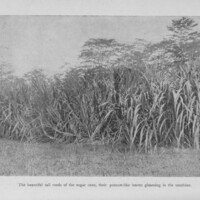Candy Sugar
Dublin Core
Title
Subject
In the fourteenth century, the word “candy” was an alternative form of the word “candi,” which referred to crystallized sugar. The use of the meaning "candy" in French (la canne) did not appear until the twentieth century, when Gaston-Martin wrote Histoire de l'esclavage dans les colonies françaises in 1948.
Studies of sixteenth-century painted miniatures show that dissolved sugar candy was added to the binding medium (usually, gum arabic) to influence how the paint dried and how some colors looked in the final painting. This application of sugar candy is described in Nicholas Hilliard’s A Treatise Concerning the Arte of Limning (ca. 1600) as well as in Ms. Fr. 640.
Description
Source
Fol. 6r - "For laying down and seating burnished gold and giving red or green or blue"
...Some put in a little candy sugar. Grind all together with water, & apply it without gum or glue, & let it dry, & rub the place that you want to gild with a piece of white cloth to better smooth it, & when the rubbed place is a little shiny, it is a sign that the gold will be carried well...
Fol. 32r - "For layering gold in distemper"
Common painters & scribes make batture, that is joiner’s glue tempered with water on the fire, moderately clear, mixed with very little honey, that is to say a few drops to make it stick. And with it they form letters, or that which they want to gild, with a paintbrush, and immediately after layer the gold, but they never do their work quite neatly, and if there is a lot of honey it dries only with great difficulty. This layer is undone in the rain.
Others do better, they temper candy sugar in water and mix it with sanguine that they call cocon, thoroughly ground, adding in a little soap. This is done neatly, & renders gold beautiful if one uses it as the seat.
Contributor
B. W. Higman, “The Sugar Revolution,” The Economic History Review 53, no. 2 (2000): 213–36, http://www.jstor.org/stable/2598696.
Christine Slottved Kimbriel and Paola Ricciardi, “A Closer Look at the Cabinet Miniature of Lord Herbert of Cherbury,” National Trust, https://www.nationaltrustcollections.org.uk/article/a-closer-look-at-the-cabinet-miniature-of-lord-herbert-of-cherbury.
Jason W. Moore, “Sugar and the Expansion of the Early Modern World-Economy: Commodity Frontiers, Ecological Transformation, and Industrialization,” Review, Fernand Braudel Center, 2000, http://www.jstor.org/stable/40241510.
Image: Sir John Bowring, “The beautiful tall reeds of the sugar cane, their pennon-like leaves gleaming in the sunshine,” J.W. Parker and son, London, 1857; Cornell University Library, 1900/1919, Artstor, https://library.artstor.org/#/asset/CORNELL_ECHOLS_1039405990.
Elia Zhang, Columbia University
